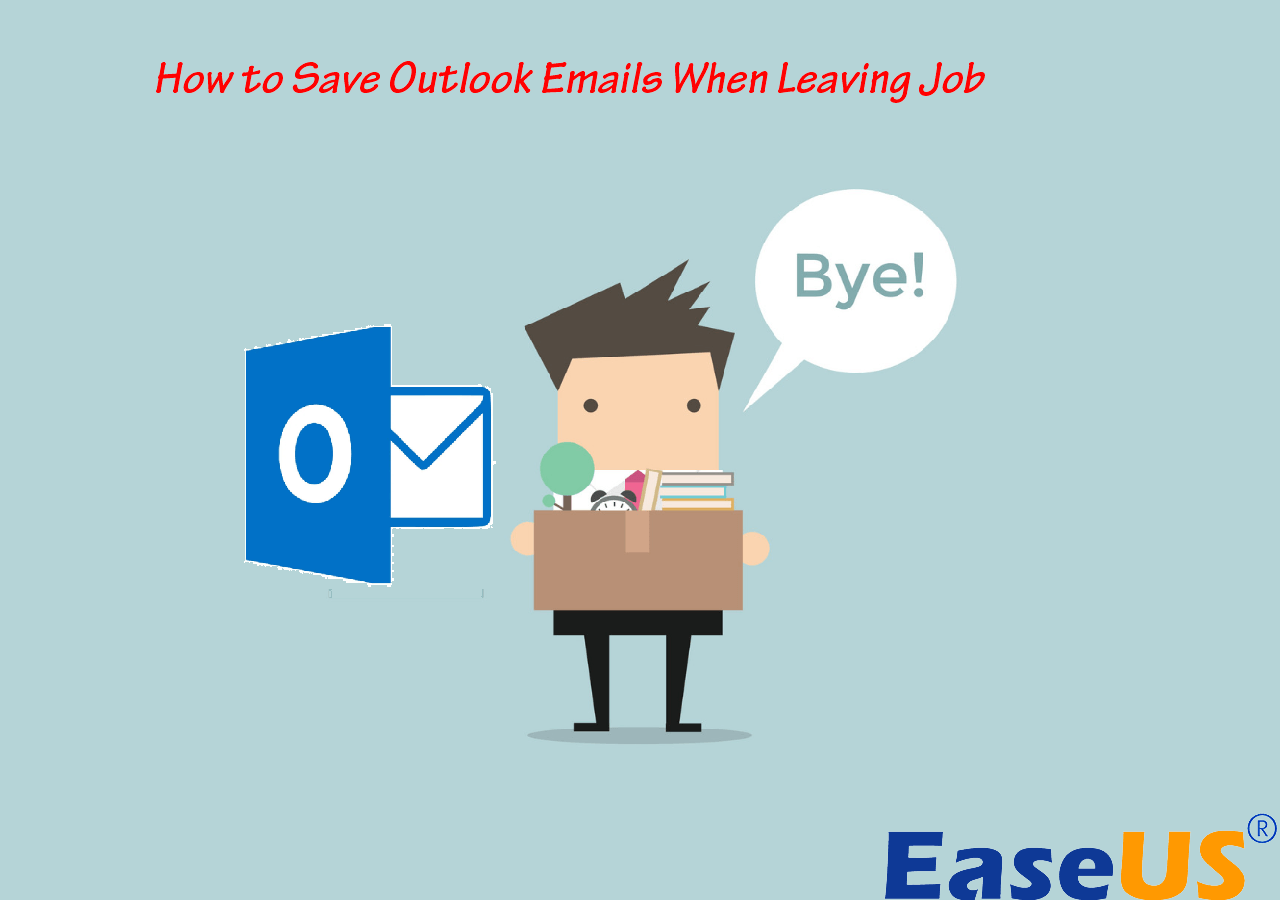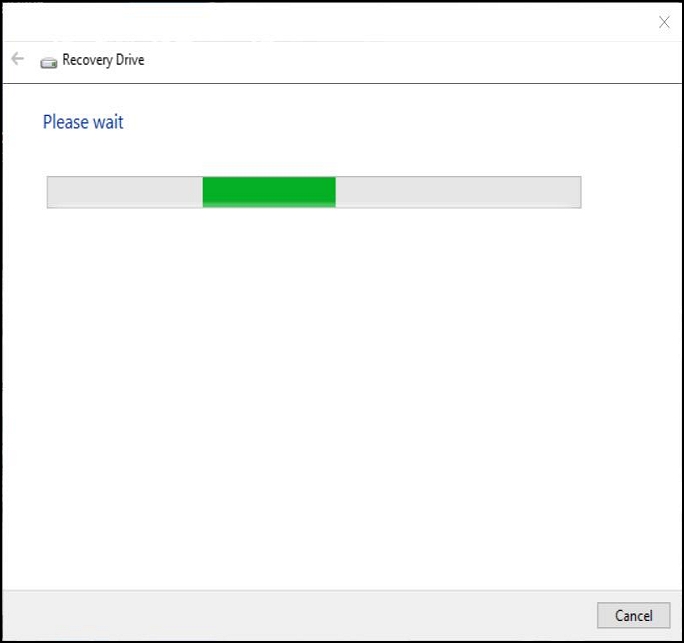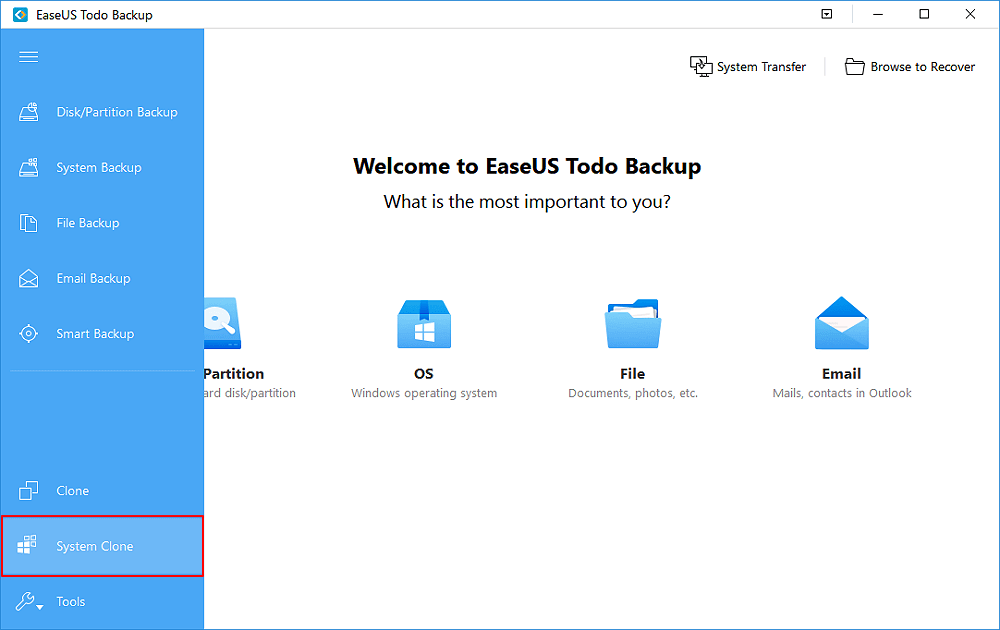Page Table of Contents
Do you often worry about losing your work? If so, you're not alone. It's easy to lose a Word document for uncertain causes, such as computer or program crashes, hardware failure, accidental deletion, human misoperation, etc.
Therefore, it's crucial to have a backup plan in place for your most important files. This article will discuss how to automatically back up Word documents in multiple ways. For example, you can use the built-in Save or AutoRecover functions in Word or an automatic file backup tool to back up Word documents. No matter which method you choose, make sure you have a backup plan for your most important files!
Back Up Word Documents Automatically with File Backup Software
Backing up your work is always essential, but it can be easy to forget. If you've been creating many important Word projects, you can set up Word automatic backup schedule with EaseUS Todo Backup Home.
Secure Download
Here is what EaseUS data backup software can do:
- Back up all the file types, including photos, videos, documents, emails, archives, etc.
- Automatically back up files to external hard drive, USB flash drive, pen drive, etc.
- Back up to cloud, OneDrive, and NAS drives
- Provide complete and quick backup and restore solutions in a few clicks
Here's how to use this data backup program to make Word automatic backup schedules:
Step 1. Click "Select backup contents" to initiate a backup.

Step 2. There are four data backup categories, File, Disk, OS, and Mail, click File.

Step 3. Local and network files will be displayed on the left side. You may extend the directory to choose which files to back up.

Step 4. Select the location where you want to store the backup by following the on-screen instructions.
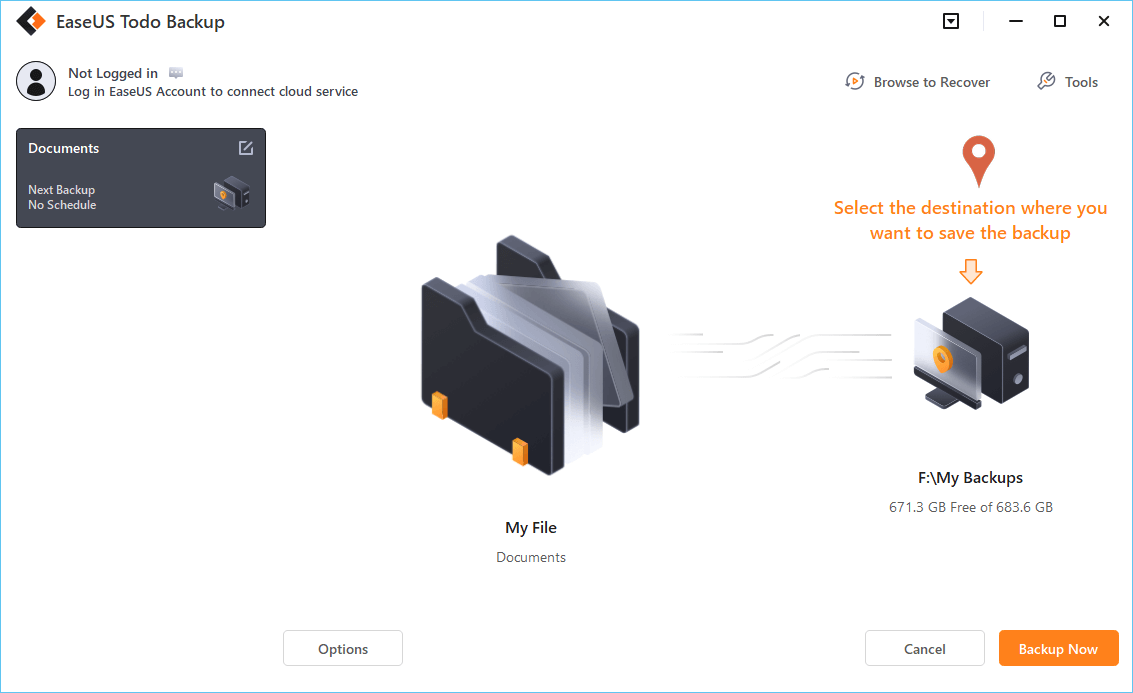
Click "Options" to encrypt the backup with a password in "Backup Options," and to setup a backup schedule and choose to initiate a backup at a certain event in "Backup Scheme." There are a variety of other customization options available for the backup process.
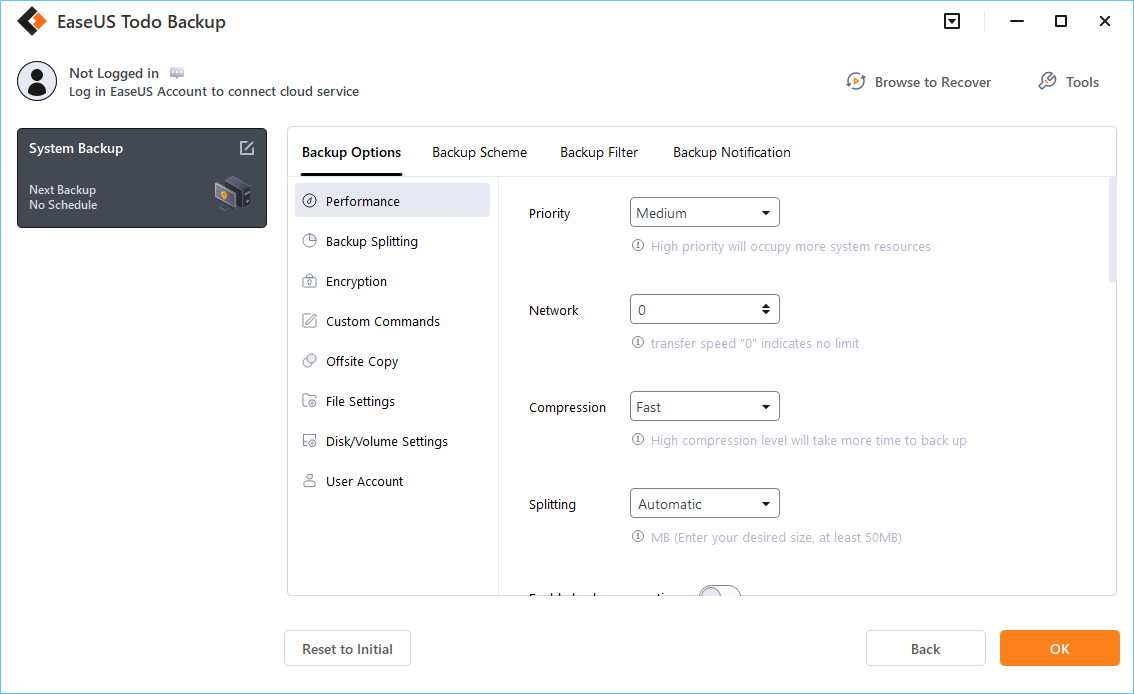
Step 5. You may save the backup to a local disk, EaseUS' online service, or a NAS.

Step 6. EaseUS Todo Backup enables customers to back up data to a third-party cloud drive and its own cloud drive.
If you want to back up data to a third-party cloud drive, choose Local Drive, scroll down to add Cloud Device, add your account, and then log in.
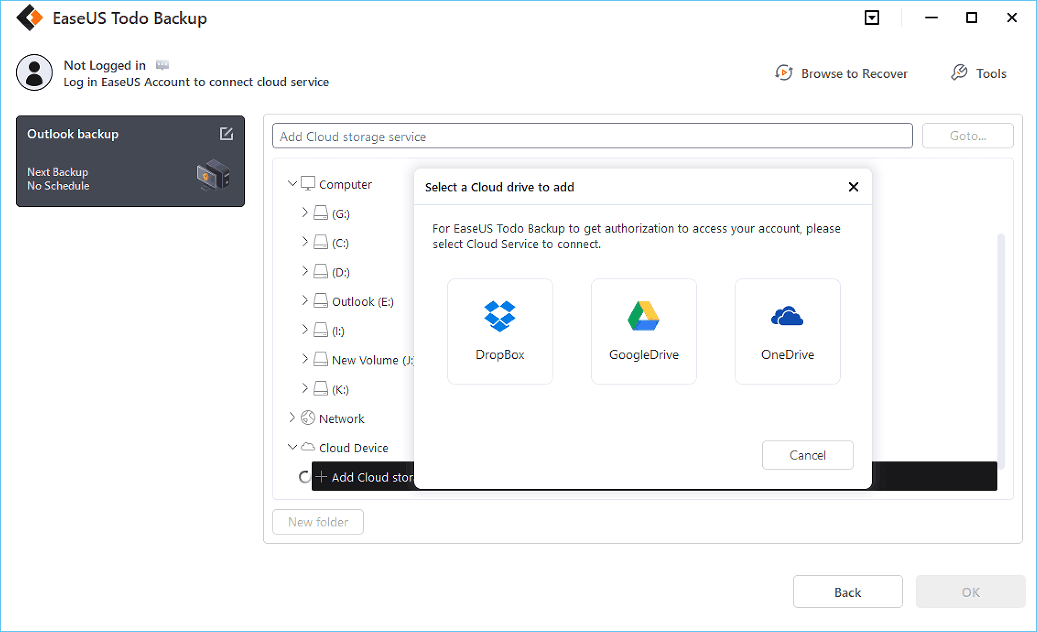
You can also save backups to EaseUS's cloud storage service. Sign up for an EaseUS Account and log in after clicking EaseUS Cloud.
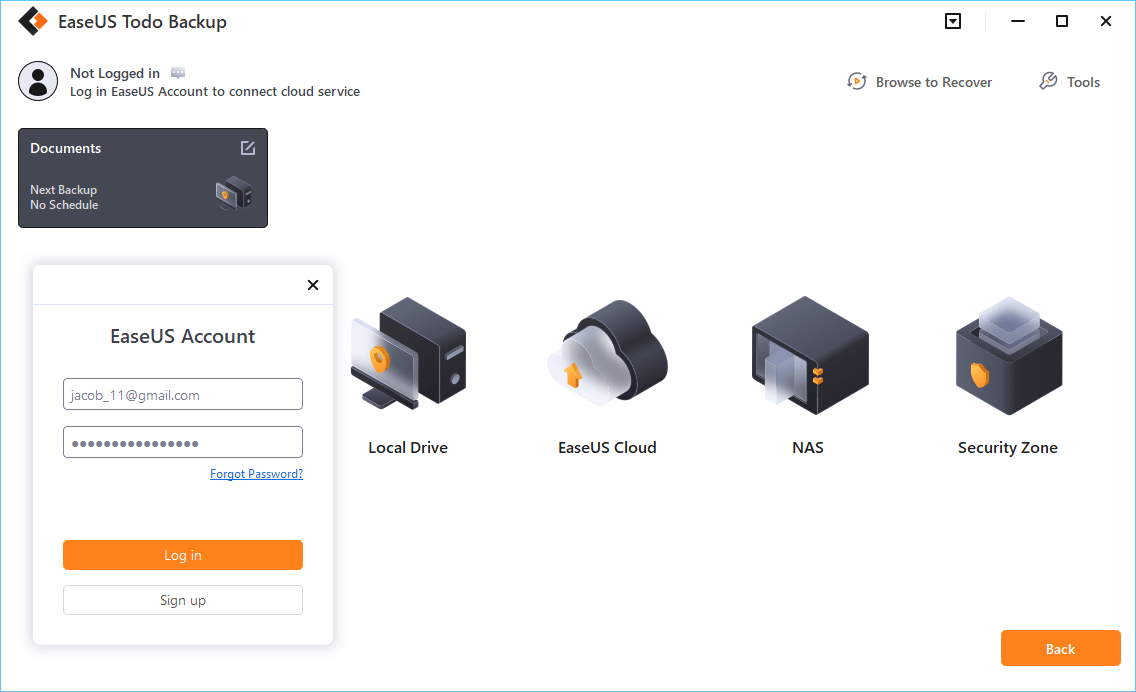
Step 7. To begin backup, click "Backup Now" Once the backup process has been finished, it will be shown as a card on the panel's left side. To further manage a backup job, right-click it.
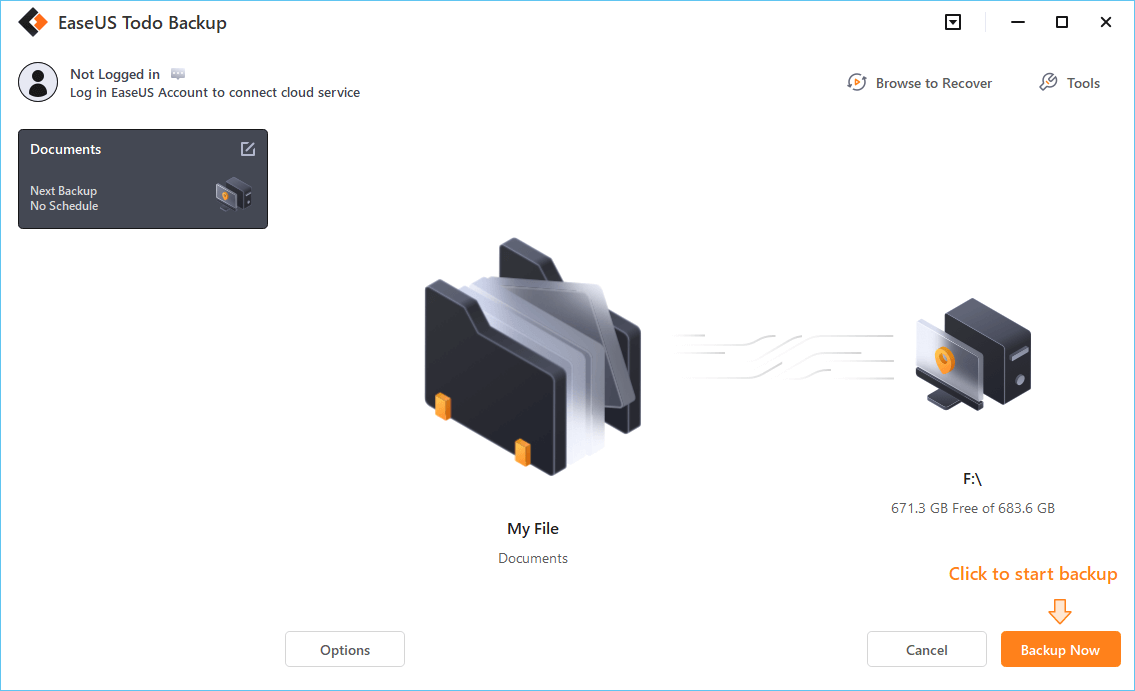
More Word backup operations are explained clearly in the following video. We've listed the key moments as below:
- 00:36 Click File > Word Option.
- 00:45 Click Save > choose AutoRecover
- 01:00 Click Adavanced > Always create backup copy
How to Create Backups of Documents in Word
Word has an embedded document backup function to help users always create a backup copy when saving files. The Word backup file is saved as a "wbk" file in the same folder as the original document, which you can open in Word and edit in.Doc or Docx file.
Here are the how-to steps:
Step 1. Open your Word, click the "File" tab and select "Options".
Step 2. Select "Word Option" and click "Advanced".
Step 3. On the right pane, Find Save and tick "Always create backup copy" beneath it.
Step 3. Then, click "OK" to save the changes.
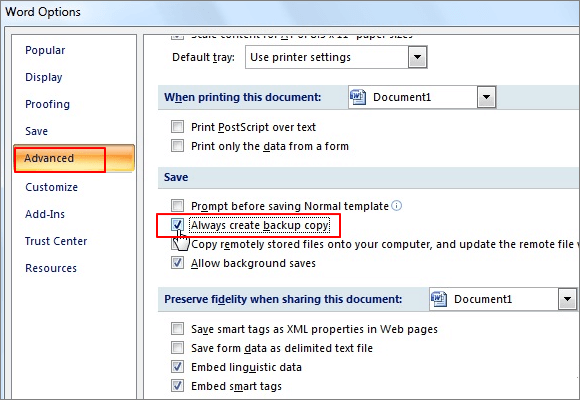
Backup Unsaved Word documents with AutoRecover
Microsoft Word has a built-in utility that can automatically back up your Word documents while you are working. Here's how it works:
While the AutoRecover feature is excellent, it only saves the unsaved Word documents to save your work automatically. You cannot use this function to back up saved documents. You should apply the other two ways if you want to back up the saved Word document automatically.
Step 1. Open Microsoft Word appliation and click on the "File" tab > "Options".
Step 2. In the pop-up window, click on "Save", located on the left side under Save Documents.
Step 3. Under the heading of Save documents, look for "AutoRecover file location" and enter the directory path where you want your backup files saved e.g., C:\Users\YourName\Documents\WordBackups.
Step 4. Make sure the checkbox for Save AutoRecover information every X minutes is checked and set to the frequency at which you want your documents backed up. The default is usually ten minutes.
Step 5. Click "OK" to save your changes.
From now on, your Word document will be automatically saved at the set interval to the directory that you specified! If you ever need to access these backup files, go to the directory path you entered as the AutoRecover file location and open the most recent file with a .asd extension.
These files are automatically generated by Word and contain all your unsaved work from your current session. If for some reason, Microsoft Word crashes, you can open this file and retrieve your unsaved work.
How to Recover Unsaved Word Documents on Windows 10/11
You can recover unsaved Word documents in a few ways, including recovering from temporary files, AutoRecovery, and Document Recovery.
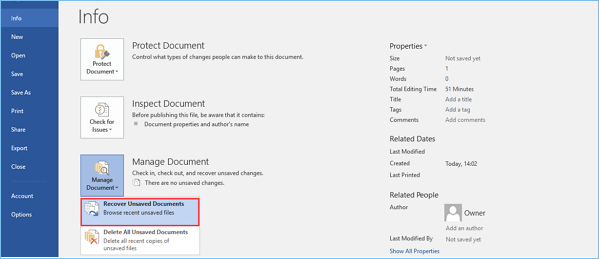
Word Documents Automatic Backup FAQs
Get more additional information on Microsoft Word documents automatic backup through the following questions and answers.
1. Does Word have an auto backup?
Many programs, including Microsoft Excel and Word, have the AutoRecover feature that can automatically back up documents to avoid data loss. You can set the auto-save interval and location as you need.
2. How do I automatically back up in Word?
The most efficient way to back up Word documents automatically is using the file backup tool:
Step 1. Launch EaseUS Todo Backup and choose file backup.
Step 2. Choose the Word documents to back up.
Step 3. Set up the backup options like cofiguring automatic backup.
3. How do I set Word to always make a backup copy?
To make a Word backup copy, here are the steps:
Step 1. Open the Word Options box. Choose Advanced.
Step 2. Scroll down to find the Save options.
Step 3. Tick on the Always Create Backup Copy box.
4. How do you turn off auto backup in Word?
How to turn off autosave in Word? We have dedicated tutorials on disabling AutoSave on Windows and macOS. Go to get the detailed guides.
Conclusion
This post has covered a couple of ways for you to automatically back up Word documents. You can use the built-in Save or AutoRecover functions in Word or an EaseUS automatic file backup tool.
EaseUS Todo Backup is well-known for comprehensive file backup features. We have a solution if you want to back up files, disks, or systems. You can back up your computer to different destinations like network shared location, USB flash drive, external hard drive, or different Clouds.
Secure Download
Was this page helpful? Your support is truly important to us!

EaseUS Todo Backup
EaseUS Todo Backup is a dependable and professional data backup solution capable of backing up files, folders, drives, APP data and creating a system image. It also makes it easy to clone HDD/SSD, transfer the system to different hardware, and create bootable WinPE bootable disks.
Secure Download
-
Updated by
Jean is recognized as one of the most professional writers in EaseUS. She has kept improving her writing skills over the past 10 years and helped millions of her readers solve their tech problems on PC, Mac, and iOS devices. …Read full bio -
Written by
Cedric Grantham is a senior editor and data recovery specialist of EaseUS. He mainly writes articles and how-to tips about data recovery on PC and Mac. He has handled 10,000+ data recovery cases and is good at data recovery of NTFS, FAT (FAT32 and ExFAT) file systems, and RAID structure reorganization. …Read full bio
EaseUS Todo Backup

Smart backup tool for your files, disks, APPs and entire computer.
Topic Clusters
Interesting Topics

